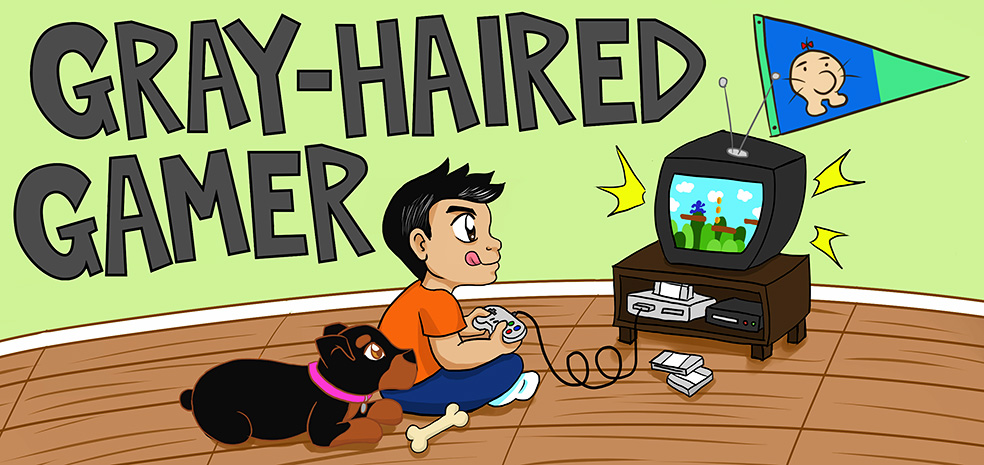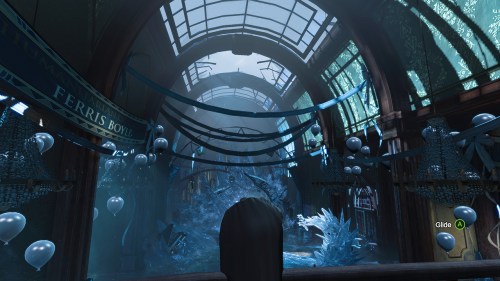Let’s cut to the chase here: Media Molecule’s Tearaway is one of the best reasons to own a Vita. If you’ve been on the fence about whether you should buy Sony’s latest handheld or not, games like this one should make that decision much easier.
From the moment I loaded it up, I knew this was going to be something special. Its art style is one of the most charming, convincing, and consistently good ones I’ve ever seen. The world of Tearaway is made up entirely of cut out pieces of paper that are animated in a stop-motion style, where every fold, roll, crunch, and flex act exactly like paper does in real life. It’s beautiful, and apart from Media Molecule’s own LittleBigPlanet series, is one of the most unique-looking games on Sony’s consoles and handhelds.
 Tearaway‘s use of color is exemplary, and is just a wonder to look at. Its small touches are key, like how loose pieces of paper are subtly pressed down when you walk over them, or the almost imperceptible, long wisps and particles that blow through the air.
Tearaway‘s use of color is exemplary, and is just a wonder to look at. Its small touches are key, like how loose pieces of paper are subtly pressed down when you walk over them, or the almost imperceptible, long wisps and particles that blow through the air.
Each element breathes life into this world, all accompanied by a restrained but effective soundtrack. It has the same effect as The Legend of Zelda: The Wind Waker, which so masterfully conveyed a spirit of adventure and the cool ocean air throughout the player’s travels.
Another area where the game excels is in its creative use of the Vita’s various hardware functions: front touch screen, rear touch pad, cameras, microphone, tilt control, and traditional controls all get a good workout. It takes some getting used to, particularly when you have to use some of them together to get through certain areas, but it makes you realize how the Vita can be used in very interesting ways. Before playing Tearaway, I never understood why Sony included the rear touch pad, but after playing this, it now makes sense, showcasing new and fun ways to include touch interaction without having to take your hands off the controls.
 Customization — a Media Molecule hallmark — is an integral part of Tearaway‘s gameplay, although it’s not as robust as the world-building systems found in LittleBigPlanet. You can create your own cut-out decorations for your character and certain others throughout your adventure, or use pre-made ones that are unlocked via in-game currency, and it all works pretty well for the most part.
Customization — a Media Molecule hallmark — is an integral part of Tearaway‘s gameplay, although it’s not as robust as the world-building systems found in LittleBigPlanet. You can create your own cut-out decorations for your character and certain others throughout your adventure, or use pre-made ones that are unlocked via in-game currency, and it all works pretty well for the most part.
I found the creation tools themselves to be a bit too vague and cumbersome, but they get the job done, and the game doesn’t penalize you if you happen to create something darn-near unrecognizable. You’ll also have a number of opportunities to take pictures of yourself, the environments, and a whole slew of other subjects during your quest. You get to do so using a virtual camera inside the game, as well as with the Vita’s front and rear-facing cameras.
 The in-game camera is impressively robust, with a wide range of lenses and filter effects. Taking pictures isn’t just something you can do for fun, but is used to unlock one of the game’s major collectibles: papercraft models.
The in-game camera is impressively robust, with a wide range of lenses and filter effects. Taking pictures isn’t just something you can do for fun, but is used to unlock one of the game’s major collectibles: papercraft models.
After unlocking them in the game, you can go to Tearaway.me to print them out and build them. This is a really nice touch, and adds to the title’s already very creative approach. I have yet to put together any myself, but it looks like fun, and with 60 models available with varying degrees of difficulty, these will give even the most dedicated papercraft maker a good challenge!
 Speaking of collectibles, Tearaway has quite a few, and they’re all interconnected. Present boxes are one, and they’re either cleverly hidden throughout each level or require certain conditions to open. They contain paper confetti — another collectible — the pieces of which are spread throughout each level, or awarded after defeating enemies. Enemies themselves count as collectibles in that you have to successfully dispatch them all in each area in order to achieve 100%. It’s a good system, and most players will go through each level two or more times to uncover everything.
Speaking of collectibles, Tearaway has quite a few, and they’re all interconnected. Present boxes are one, and they’re either cleverly hidden throughout each level or require certain conditions to open. They contain paper confetti — another collectible — the pieces of which are spread throughout each level, or awarded after defeating enemies. Enemies themselves count as collectibles in that you have to successfully dispatch them all in each area in order to achieve 100%. It’s a good system, and most players will go through each level two or more times to uncover everything.
Are there any problems? Unfortunately, one of the first things you’ll notice are the unusually long load times throughout. If you’re a completionist, there are several Trophies that will require you to start levels over at least a few times, and every time you do, you have to sit through the same long loading screen. They’re interactive, but are still an annoyance and not much of a consolation.
 Those same Trophies also underscore one of Tearaway‘s biggest flaws: it’s not as good a platformer as it thinks it is. Whereas games like Super Mario 3D World have impeccable controls and camera angles, Tearaway suffers from slightly undercooked controls and a camera that is a hindrance more often than it should be. I fell to my death quite often simply because I was unable to judge where I was in the middle of a jump.
Those same Trophies also underscore one of Tearaway‘s biggest flaws: it’s not as good a platformer as it thinks it is. Whereas games like Super Mario 3D World have impeccable controls and camera angles, Tearaway suffers from slightly undercooked controls and a camera that is a hindrance more often than it should be. I fell to my death quite often simply because I was unable to judge where I was in the middle of a jump.
These negatives don’t matter all that much during regular gameplay, since checkpoints are plentiful and you have unlimited lives, but the aforementioned Trophies require you to get through extremely long levels without dying once, and that’s when it makes you feel like your various demises are the game’s fault, not your own, and that’s a no-no in Game Design 101.
On the other hand, I had fun getting the other Trophies, and relatively speaking, this game provides an easy Platinum for Trophy hunters out there.
In closing, while not without its flaws, Tearaway is a special game. It serves as a vital piece of evidence supporting the case for traditional handhelds, and why they shouldn’t become extinct. In this game’s case, it could unarguably only be done on the Vita. Highly recommended.
Graphics: A
Audio: A-
Gameplay & Controls: B
Presentation: A
Value: A-
Overall: A














